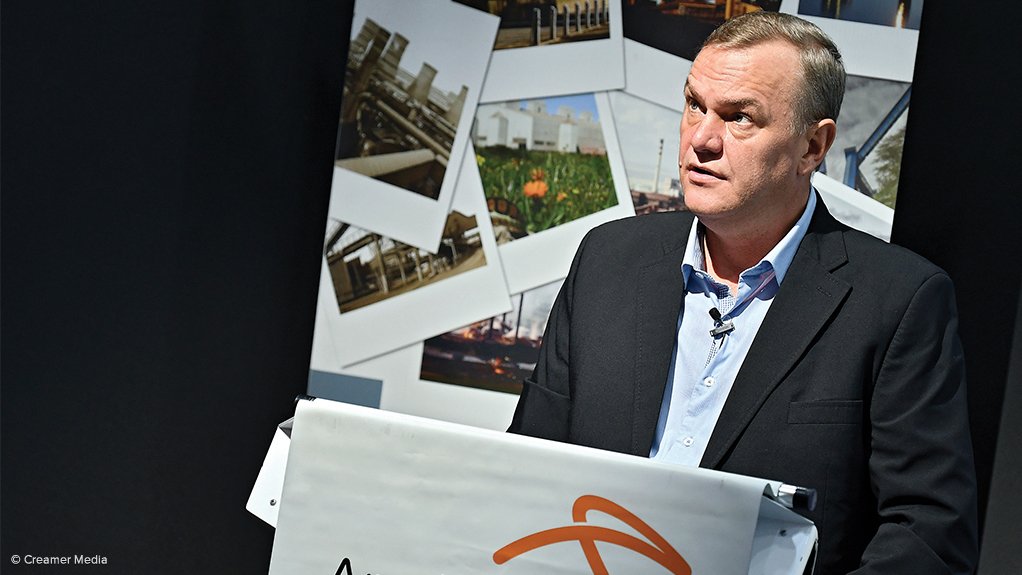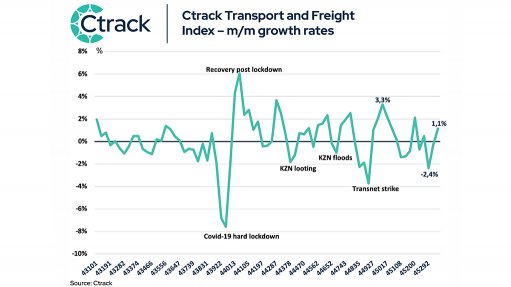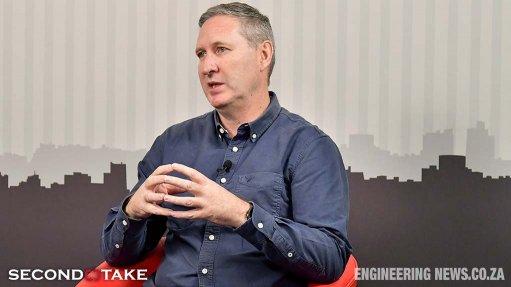Opinion: Pollution in the Vaal Triangle – progress, but more must be done
In this article, ArcelorMittal South Africa (AMSA) CEO Kobus Verster writes that industry across the Vaal Triangle, together with responsible corporate citizens in the steel industry, must constantly improve their overall environmental performance above and beyond air quality indicators.
South Africa has an air pollution problem. Yet, the '2023 World Air Quality Report' notes an overall improvement in the country’s performance when measured against that of 134 other countries and 7 812 cities. The East Rand city of Benoni has the worst air quality in Africa, followed by Bloemfontein, while the industrial town of Vereeniging in the Vaal Triangle comes in twelfth. The authoritative report measures fine particulate aerosol particles of up to 2.5 microns per cubic metre.
But despite significant progress, local challenges persist and must be addressed through a combination of industry mitigation measures, cleaner energy generation and better transport utilisation. This can only be achieved in an enabling policy environment, industry commitment, community education and engagement, and the financial support required to achieve transitional measures.
As the country’s heavy industrial heartland, it comes as no surprise that pollution in the Vaal Triangle is higher than the national average. To a significant degree, heavy industry in the area is both a beneficiary and victim of its historical legacy.
When planning the establishment of a domestic South African steel industry in the 1930s, the aims were to boost the country’s industrial base, job creation and lessening the dependence on imports, but this also resulted in pollution and other environmental implications.
Environmental issues are central to the operations and future planning of the steel industry, which is seized with tackling legacy issues and overcoming technological challenges while addressing legitimate social and community environmental concerns.
The biggest and often unrecognised challenge to improving its overall air quality is the particularities of the Vaal Triangle’s microclimate. As a so-called “airshed” (where local conditions limit the dispersion of pollutants), the Vaal Triangle experiences persistent elevated inversions, were pollution is trapped at lower atmospheric levels, particularly during the colder periods of the morning and night.
In 2006, the then Department of Environmental Affairs and Tourism declared the Vaal Triangle the first ‘priority area’ to be declared in the country, giving rise to a comprehensive Air Quality Management Plan. The plan has the overarching objective of improving overall air quality in the area. It identifies a myriad sources of air pollutants, including: biomass burning, domestic fuel burning, small industries, transportation, waste burning, mining operations, coal-fired power generation, the petrochemical sector and the iron and steel and ferroalloy industrial sector.
AMSA is committed to minimise the impact of its operations on the environment. The main undertakings included the removal of old coke batteries and their replacement with those of best available technology, along with the installation of emission abatement technology (essentially a bag filtering system) to reduce particulate matter emissions.
The government’s 2013 review of the Vaal Triangle Priority Area (VTPA) Plan found that the steel industry had achieved, “significant reductions in stack and fugitive emissions, as well as improved emissions monitoring.”
More specifically, this 2013 review found AMSA to have completed its blast furnace fugitive roof emissions strategy and met required targets; achieved dust suppression targets; ceased dosing with spent pickling liquor; installed wet scrubbing emission abatement technology and installed a water cleaning plant.
Indeed, the company now exceeds 98% of current government standards for pollution control on the metred stacks. It further committed to the installation of a clean gas unit along with a secondary dust extraction system. Up to and including the 2020 VTPA review, ArcelorMittal completed a further 12 emission reduction measures, all of which were verified by government.
The government is due to publish its 2025 VTPA review next year, which will measure recent outcomes and provide further benchmarks for improving the air quality of this industrial heartland.
Industry across the Vaal Triangle, together with responsible corporate citizens in the steel industry, must constantly improve their overall environmental performance above and beyond air quality indicators.
Comments
Press Office
Announcements
What's On
Subscribe to improve your user experience...
Option 1 (equivalent of R125 a month):
Receive a weekly copy of Creamer Media's Engineering News & Mining Weekly magazine
(print copy for those in South Africa and e-magazine for those outside of South Africa)
Receive daily email newsletters
Access to full search results
Access archive of magazine back copies
Access to Projects in Progress
Access to ONE Research Report of your choice in PDF format
Option 2 (equivalent of R375 a month):
All benefits from Option 1
PLUS
Access to Creamer Media's Research Channel Africa for ALL Research Reports, in PDF format, on various industrial and mining sectors
including Electricity; Water; Energy Transition; Hydrogen; Roads, Rail and Ports; Coal; Gold; Platinum; Battery Metals; etc.
Already a subscriber?
Forgotten your password?
Receive weekly copy of Creamer Media's Engineering News & Mining Weekly magazine (print copy for those in South Africa and e-magazine for those outside of South Africa)
➕
Recieve daily email newsletters
➕
Access to full search results
➕
Access archive of magazine back copies
➕
Access to Projects in Progress
➕
Access to ONE Research Report of your choice in PDF format
RESEARCH CHANNEL AFRICA
R4500 (equivalent of R375 a month)
SUBSCRIBEAll benefits from Option 1
➕
Access to Creamer Media's Research Channel Africa for ALL Research Reports on various industrial and mining sectors, in PDF format, including on:
Electricity
➕
Water
➕
Energy Transition
➕
Hydrogen
➕
Roads, Rail and Ports
➕
Coal
➕
Gold
➕
Platinum
➕
Battery Metals
➕
etc.
Receive all benefits from Option 1 or Option 2 delivered to numerous people at your company
➕
Multiple User names and Passwords for simultaneous log-ins
➕
Intranet integration access to all in your organisation





















